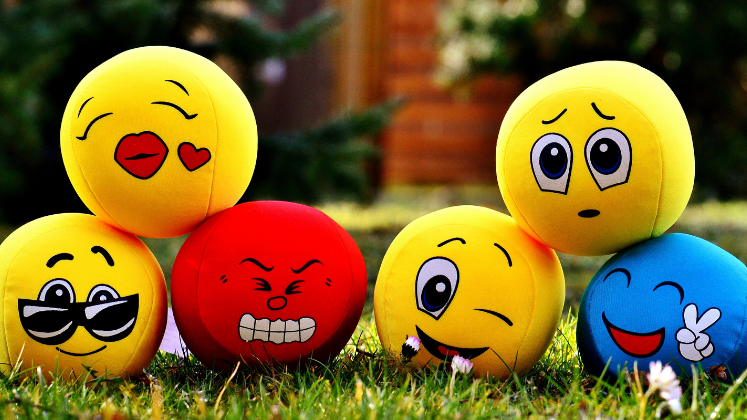Does freedom to do what you like make you more creative? Lisa Bladh (BSc Psychological and Behavioural Science) looks at research that suggests that, under the right conditions, restrictions can help us flourish, and this is because of how we as humans have evolved.
Have you ever stared pointlessly at a blank document, trying to come up with an essay topic that your professor so generously gave you the “freedom” to choose yourself? If you feel lost by the lack of guidance this task provides, you’re not alone. But why does the absence of constraints leave us feeling trapped instead of liberated?
The paradox that this illustrates is well documented in the literature (Acar et al. 2018; Rosso, 2014; De Clercq, Dimov, & Thongpapanl, 2013; Medeiros et al., 2014; Chua & Iyengar, 2008). Our creativity seems to benefit from rather than be limited by constraints such as time pressure, financial restriction and even formalization of the innovation process (Acar et al. 2018; Rosso, 2014). This might leave us wondering whether we are ill adjusted to the modern world, where we take more resources than ever for granted. It all sounds like a cruel paradox: removing restrictions can lead to worse creative outcomes than if the constraints were there all along. How does this play out in our minds? And why on earth haven’t we evolved to take full advantage of the resources around us? Let’s dive in!
The sky’s the limit, isn’t it?
It seems perfectly rational that giving people the freedom to approach a problem in any way they want should be the shortest route to end up at the best result. If we look at the mountain of research suggesting a positive effect of flexibility and autonomy in the workplace (e.g. Hill et al., 2008; Ryan & Deci, 2000; Zhou, 1998) or see the creative process as a Darwinian one where variation and selection determine the creative output (e.g. Simonton, 1999; Campbell, 1960) it appears self-evident that constraints would be bad news. More recent research, though, gives freedom of constraint a run for its money (Acar et al., 2018; Rosso, 2014; De Clercq, Dimov, & Thongpapanl, 2013; Medeiros et al., 2014; Chua & Iyengar, 2008).
Reviews suggest that a wide range of constraints help creativity, in the right conditions and to reasonable extents (Acar et al. 2018; Rosso, 2014). Oguz Acar and his colleagues propose three clusters of restrictions; input- , process- and output constraints. They are not alone in finding that the relations between constraints in all three clusters and creative outcomes form an inverted U-shaped curve (Acar et al. 2018; Rosso, 2014; Medeiros et al., 2014). This reveals a quirk of the human brain; restrictions make us think better, but only to a certain extent. In other words, we seem to have a sweet spot for constraints. Let’s take a closer look at the inner workings of this.
Turning a fence into a ladder: three ways
Seeing the box makes us think outside of it

Some research suggests that when we are forced to do more with less, we experience less functional fixation and we are inspired to use the resources at hand more creatively (Mehta & Zhou, 2016). In fact, even just suggesting a sense of scarcity (without actually restricting resources) can make us use materials beyond the traditional ways (Mehta & Zhou, 2016). Input constraints might also make us go out of our way to search for and combine information to come up with new ideas (Acar et al. 2018). This route, which Acar calls the cognitive one, can be seen in research on start-ups, where the self-funded ones makes do on less resources later on than those that relied on early investors (Acar et al.; 2018; Vanacker, Manigart, Meuleman & Sels, 2011; Jones & Jayawarna, 2010).
The box is an obstacle course
There is also reason to believe that the challenge that constraints pose can motivate us to find new paths to the end goal (Acar et al., 2018). Being restricted might increase our intrinsic motivation to engage in activities that lead to innovation in the first place (Ohly & Fritz, 2010). But the balance between challenge-framing a constraint and limiting one’s sense of autonomy is a hard one to strike; if we don’t feel like we are in control of the process, creativity wains (Ryan & Deci, 2000).
You’re trapped in the box too? Let’s collaborate.
Limitations around the innovative process might also feed creativity by creating a common structure that helps us come up with better ideas as a group (Brattsröm, Löfsten & Richtnér 2012; De Clercq, Dimov, & Thongpapanl, 2013). For example, a study found that when we have more guidelines in the idea-generation stage, sharing knowledge within and between teams in the workplace brings about more entrepreneurial orientation than when we are totally unrestricted (De Clercq, Dimov, & Thongpapanl, 2013).
Smarts have an opportunity cost
So, why are we like this? Shouldn’t we have evolved to make the most out of the resources we have, abundant or not? Let’s take a moment to think about the possible ultimate explanations for this quirk of the human mind. Research touched on above points us to the social value of constraints (Brattsröm, Löfsten & Richtnér 2012; De Clercq, Dimov, & Thongpapanl, 2013). This might be crucial. Societies that developed social mechanisms to innovate in constrained environments may have survived better than those focusing on making the most out of every drop of resources, thanks to the collaborative generation and implementation of ideas. For example, if one culture had meetings where they came up with the best use of animal bones for tools, it might have survived better than another culture, hunting down every last animal for bones but not using them as effectively. There is no evolutionary advantage to finding innovative solutions in an environment where resources are unlimited, because everyone lives to reproduce. So rather than constraints in themselves being good for creativity, humans may just have developed the cognitive and cultural mechanisms for making decisions and solving problems in the face of restriction.
Therefore, an important reason as to why we feel lost when the possibilities seem endless may be that the inherited cognitive and social ways we use to navigate problems are not meant to optimise resources, but your chances of reproduction. And when has an essay ever killed you?
Want to learn more?
- TEDed: The power of creative constraints [LINK]
- HBR: Why Constraints are Good for Innovation [LINK]
- BBC ideas: How limits can boost your creativity [LINK]
Notes
- The views expressed in this post are of the author and not the Department of Psychological and Behavioural Science or LSE.
- This blog post was originally written as part of PB101: Foundations of Psychological Science, a compulsory course on the BSc Psychological and Behavioural Science programme in the Department of Psychological and Behavioural Science at LSE. It has been published with the permission of the author. Visit the PBS website for more information on studying in the department https://www.lse.ac.uk/PBS/Study.
- Featured image by Maarten Deckers on Unsplash
References
Acar, O. A., Tarakci, M., & van Knippenberg, D. (2018). Creativity and Innovation Under Constraints: A Cross-Disciplinary Integrative Review. Journal of Management, 45(1), 96–121. https://doi.org/10.1177/0149206318805832
Brattström, A., Löfsten, H., & Richtnér, A. (2012). Creativity, trust and systematic processes in product development. Research Policy, 41(4), 743–755. https://doi.org/10.1016/j.respol.2011.12.003
Campbell, D. T. (1960). Blind variation and selective retentions in creative thought as in other knowledge processes. Psychological Review, 67(6), 380–400. https://doi.org/10.1037/h0040373
Chua, R. Y. J., & Iyengar, S. S. (2008). Creativity as a Matter of Choice: Prior Experience and Task Instruction as Boundary Conditions for the Positive Effect of Choice on Creativity. The Journal of Creative Behavior, 42(3), 164–180. https://doi.org/10.1002/j.2162-6057.2008.tb01293.x
De Clercq, D., Dimov, D., & Thongpapanl, N. T. (2013). Organizational Social Capital, Formalization, and Internal Knowledge Sharing in Entrepreneurial Orientation Formation. Entrepreneurship Theory and Practice, 37(3), 505–537. https://doi.org/10.1111/etap.12021
Jeffrey Hill, E., Grzywacz, J. G., Allen, S., Blanchard, V. L., Matz-Costa, C., Shulkin, S., & Pitt-Catsouphes, M. (2008). Defining and conceptualizing workplace flexibility. Community, Work & Family, 11(2), 149–163. https://doi.org/10.1080/13668800802024678
Jones, O., & Jayawarna, D. (2010). Resourcing new businesses: social networks, bootstrapping and firm performance. Venture Capital, 12(2), 127–152. https://doi.org/10.1080/13691061003658886
La Guardia, J. G., Ryan, R. M., Couchman, C. E., & Deci, E. L. (2000). Within-person variation in security of attachment: A self-determination theory perspective on attachment, need fulfillment, and well-being. Journal of Personality and Social Psychology, 79(3), 367–384. https://doi.org/10.1037/0022-3514.79.3.367
Medeiros, K. E., Partlow, P. J., & Mumford, M. D. (2014). Not too much, not too little: The influence of constraints on creative problem solving. Psychology of Aesthetics, Creativity, and the Arts, 8(2), 198–210. https://doi.org/10.1037/a0036210
Mehta, R., & Zhu, M. (2016). Creating When You Have Less: The Impact of Resource Scarcity on Product Use Creativity. Journal of Consumer Research, 42(5), 767–782. https://doi.org/10.1093/jcr/ucv051
Ohly, S., & Fritz, C. (2010). Work characteristics, challenge appraisal, creativity, and proactive behavior: A multi-level study. Journal of Organizational Behavior, 31(4), 543–565. https://doi.org/10.1002/job.633
Rosso, B. D. (2014). Creativity and Constraints: Exploring the Role of Constraints in the Creative Processes of Research and Development Teams. Organization Studies, 35(4), 551–585. https://doi.org/10.1177/0170840613517600
Simonton, D. K. (1999). Donald Campbell’s Model of the Creative Process: Creativity as Blind Variation and Selective Retention. The Journal of Creative Behavior, 32(3), 153–158. https://doi.org/10.1002/j.2162-6057.1998.tb00812.x
Vanacker, T., Manigart, S., Meuleman, M., & Sels, L. (2011). A longitudinal study on the relationship between financial bootstrapping and new venture growth. Entrepreneurship & Regional Development, 23(9–10), 681–705. https://doi.org/10.1080/08985626.2010.502250
Zhou, J. (1998). Feedback valence, feedback style, task autonomy, and achievement orientation: Interactive effects on creative performance. Journal of Applied Psychology, 83(2), 261–276. https://doi.org/10.1037/0021-9010.83.2.261





Our cultural histories and artistic traditions offer frameworks to operate within, but also structures to challenge and transcend. You may find it of interest to read Nietzsche on this… we are constrained by the rules of our language, he says, but it is only through such constraints that we are free to engage in limitless conversations… https://theconversation.com/living-life-as-an-artist-nietzsche-on-creativity-36257
You may also find Koestler’s autobiographical account of his experiences in prison of interest… led him to establish the Koestler Trust of course… They have over fifty years of evidence of the power of the arts to transcend the constraints of prison confinement… https://www.koestlerarts.org.uk/
“And when has an essay ever killed you?”
Interesting article over on Psychology Today titled “The Toxic Consequences of Attending a High-Achieving School” which might have some relevancy here.